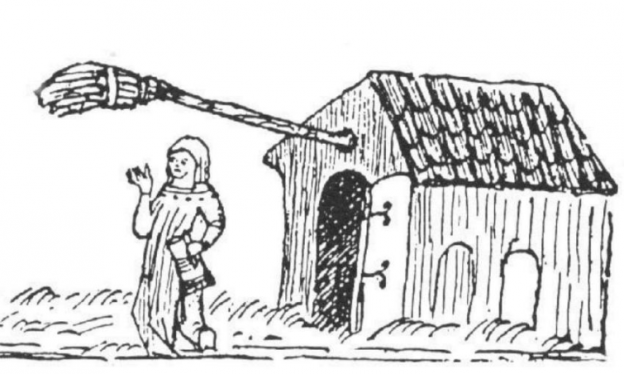Speaker: Tim Healey
On Thursday 13th September, the Society heard a talk by Tim Healey on “Sex, Drink and Death in 17th Century Oxfordshire”. The talk amply lived up to the entertaining title, since Tim Healey had an arsenal of facts which he distributed with evident pleasure to the audience.
He started with a description of the ways in which alcohol was consumed in the 17th century. Water was so heavily polluted that it was extremely dangerous to drink it, so everyone, including children, drank ale. For the youngest children, there was ‘small ale’, which was a weaker version of the ‘real thing’. Taverns were a popular place for people to meet and socialise. Games were played, like Skittles, and Cudgels; young men indulged in Prize Fighting, plays were staged, showmen brought sights like ‘bearded ladies’ and presented their menageries. Present day pubs with names like “The Bear”, or “The Cock” were probably venues for bear baiting and cock fighting.
At about this time, beer was introduced to England from Holland, and so hops began to be grown in Kent. Beer could be stored more easily, kept longer and was cheaper, so it soon became more popular than ale. At about this time, Taverns which sold wine and sack (a kind of sherry) became popular, and Inns which offered lodging, especially to stage coach passengers were established in many places. ‘Flying coaches’, which could reach London from Oxford in less than a day, became very popular. At this time highwaymen began to appear. Many of them were veterans of the Civil War, having fought , and lost, on the Royalist side. There were
stories of female ‘highwaymen’ such as one called “The Wicked Lady”.
As regards Sex, Tim Healey produced some very interesting figures which illustrated very well the attitudes prevalent at that time. More than 30% (perhaps 50%) of women seem to have been pregnant before they were married – although this was not thought to be as shameful as it became later on. There was a custom called ‘hand-clasping’ which took place before marriage, and was a test of the compatibility of the couple for marriage. There was even a tradition, known as ‘bundling’ and approved of by the Puritans, whereby the young couple were put to
bed together, albeit separated by a ‘bundling board’. The biggest cause of shame was illegitimate birth.
The May festivities were a prime source of enjoyable sexual activity, though the Puritans disapproved. It was common practice for men to dress up in women’s attire when taking part in the celebrations.Christmas was celebrated with enthusiasm and lustily. After the Civil War, when many young men had been killed, there were a lot of ‘frisky’ young ladies, many of whom made themselves available in taverns. They became known as ‘light housewives’. Dons from the University, and students, would go out to the villages round Oxford looking for ‘bawds’. After
the Restoration, the mood became even freer. Charles II had at least 12 illegitimate children, and several mistresses, including Lady Castlemaine and the famous Nell Gwynne. It was also the time when the notorious Earl of Rochester flourished. Many people caught ‘The Pox”, and were sometimes treated for it in a bath of mercury.
Tim Healey’s last theme was Death. There was a great awareness of the subject at the time. The life expectancy was approximately 35, though this was distorted greatly by the very high child and young person mortality. The commemoration of death in churches and churchyards became much more common to every level of society, and when the Bible was printed in English, especially when the King James Bible became available, this had a very important effect on people’s view of the world. The execution of Charles I had a deep and very strong effect on the people. Death was very much ‘in your face’. There were many gibbets, where executed
criminals were displayed as a lesson to the people. Witchcraft was a very common concern.Witches were not burnt, but hanged, and there were probably many fewer
of them than is usually thought. There were parts of the country where witches were
pursued very vigorously, and often the witch-hunt was a result of ordinary local disputes.
The Great Plague probably killed about 100,000 people. It had been brought over in ships, and may have come from the Netherlands. People thought that it was the ‘noxious vapours’ in the air that brought it on. It was followed, and it seems finally banished, by the Great Fire of London, which destroyed a very large number of buildings, but killed many fewer people than might have been expected. But Death was omnipresent in people’s thoughts, and was written about and explored by writers such as John Donne, since Death was considered to be the soul’s way to eternal life.

